What to expect from a Botswana safari in Low Season
With careful planning you can enjoy a fantastic safari at a time when the Okavango is most beautiful- and take advantage of low season rates. For those looking to travel in low season we use our many years of local expertise to create an itinerary which maximises your safari experience – visiting well located camps with permanent waters, resident game and open plains for good visibility. And of course staying in good camps with great guides who can use their expert knowledge and experience to track down those special sightings.
The summer months of December-March are classified as low season, also known as Green Season due to the stunningly verdant landscapes at this time of year.
These months are categorised as low season for two reasons. Firstly, this is when Botswana receives most of its rainfall and the vegetation is thickest – the plentiful water sources and thicker vegetation can make game viewing more challenging. Secondly (and quite confusingly) this is when the Okavango flood waters are traditionally at their lowest, despite the local rains.
It is worth considering each separately.
Weather and game viewing conditions
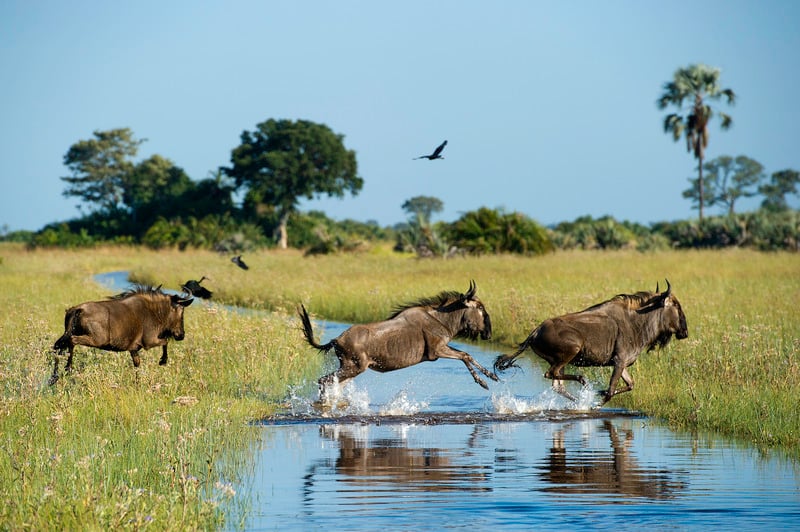
The Green Season is true to its name. The bushveld is a hundred different shades of green brought about by the rains. It is the Okavango at its most beautiful – lush and bursting with life. Wild flowers carpet the plains and the air is full of birdsong and flashes of colour with the arrival of the migratory birds. The animals are thriving in these conditions, there are many baby animals about such as impala and wildebeest which are born at times when there is plenty to eat. The country is bursting with life. It is a lovely time of year.
From December to March the country receives most of its rainfall. The days are hot and sunny in the mornings often with afternoon thunderstorms, usually short sharp downpours, during the late afternoon. It is a wonderful time for photography, the air is clear and bright.
There are more water sources as rain pools gather so the animals are more spread out. The thicker vegetation is very beautiful but does mean you have to work a little harder to find the most popular animals, such as the cats. Rest assured the animals are still there! It simply requires a little more patience.
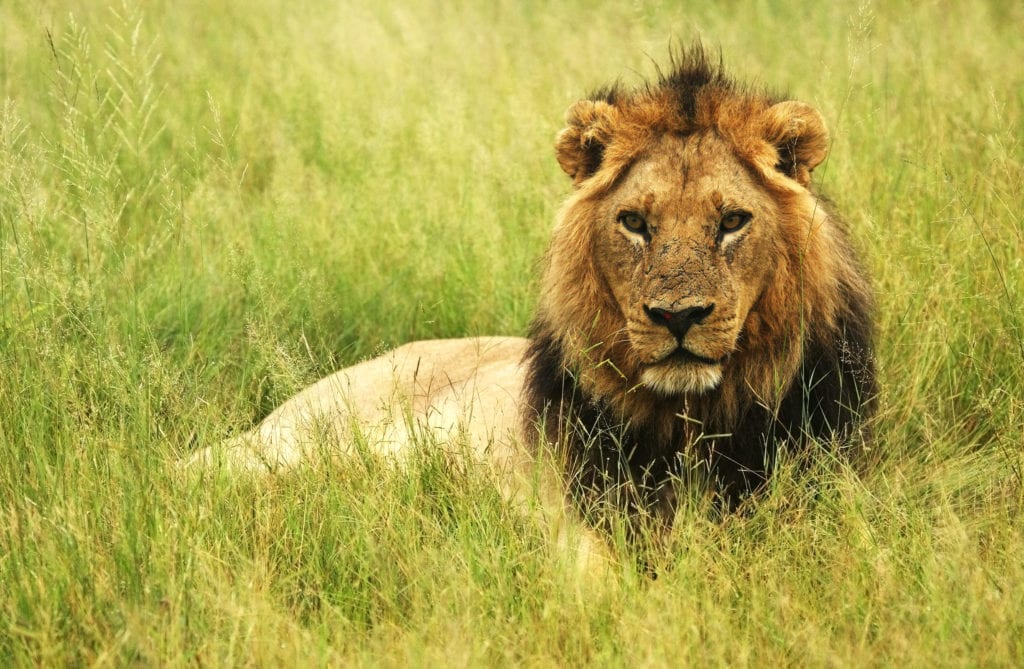
This is why it is so important to have a great guide- in the dry season the animals are much easier to find, in the green season a great guide will use his skills and experience to find those amazing sightings. We’ve had some of the best sightings during the green season all because of a great guide – a top guide will ensure a fascinating and rich safari experience at any time of year.
Another point to consider is the area you visit during the wetter months. Those with good numbers of resident game and open plains offer the best game viewing. Examples include Kwara, Shinde, Vumbura and Khwai. Some areas really come into their own at this time – like corners of the western Okavango such as Abu, Pom Pom, Kanana and Xigera. Other areas are more seasonal and see more migration during these months – such Selinda and the Linyanti.
All of this we take into account when planning your itinerary.
Finally – It is also worth considering this is summer in Botswana, and the days are warm/hot and often a welcome change for visitator from a cold northern hemisphere winter! Many not only appreciate the low season rates but the glorious African light and warmth for a few weeks between the darkest months of the year. See our guide to the seasons for more information.
Water Levels
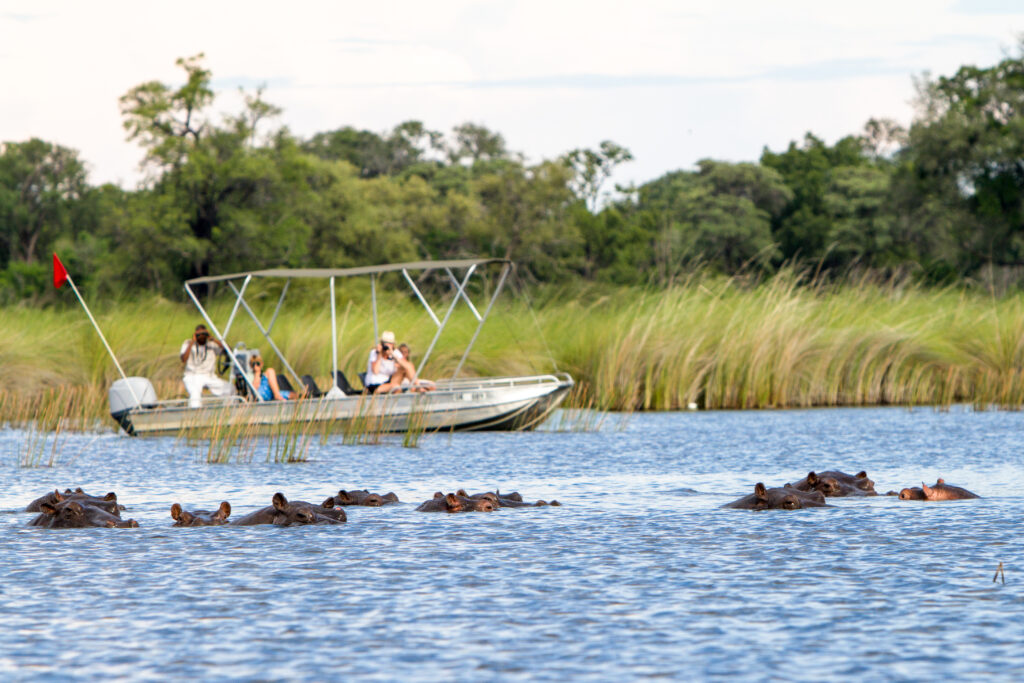
It is important to understand the Okavango Delta is formed not by the direct rains overhead but from the rains which fall in the Angolan highlands (around Dec-March). It is the culmination of a river system that has its catchment area 1,200 km north in Angola and flows down through Namibia and then into Botswana. This water flows very slowly down the river systems into the Okavango – taking 4-6 months – arriving around April-June and peaking around July. It is this which makes the phenomenon of the Okavango so extraordinary- the water arrives just as the surrounding lands are drying up. i.e. just when the animals need it most. A true oasis in the desert.
The local rains will also affect the Okavango water levels. If we have good rains this will top up the Delta and many more camps will be able to offer water activities. For example – we had wonderful rains in 2020 and 2021, from November to April, so during the low season the Okavango was actually looking more like it does during the peak of the floods in July. And even though we are expecting a modest flood from Angola for the 2021 the residue water from the earlier rains means the Delta will still swell to a considerable size and most camps should operate water activities. Conversely, 2019 was a drought year and only those camps with permanent water could offer water activities.
Of course there is no way of knowing what the rains will be like from year to year – this is why we try to include at least one safari camp which offers year round water activities to ensure an opportunity to enjoy a water safari during your visit.
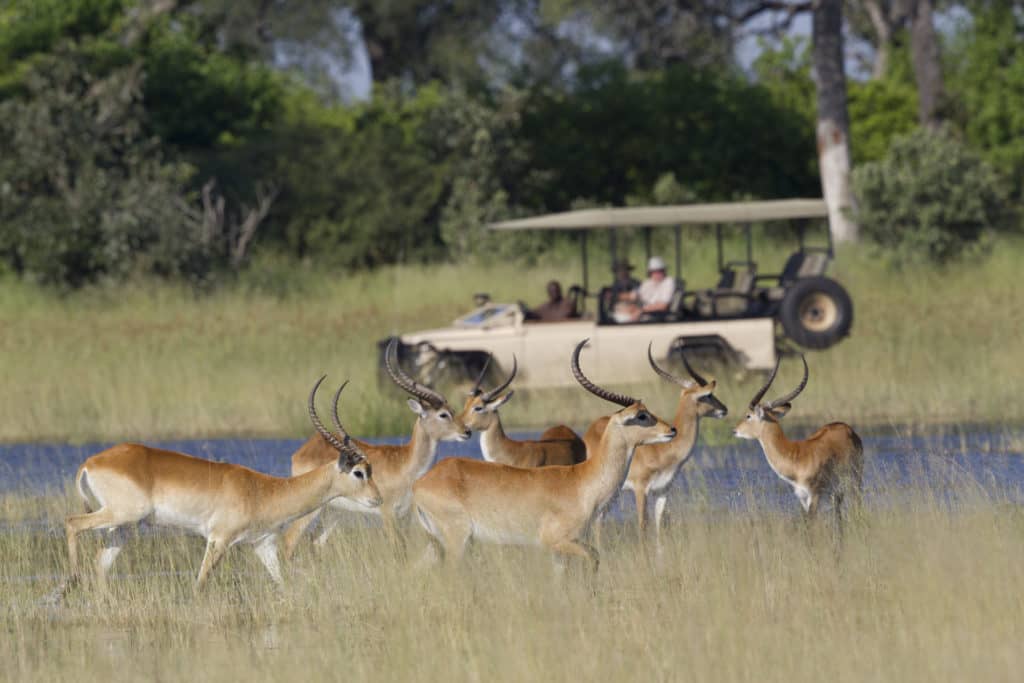
Having said all this – it is important to understand that you will most likely see water at any camp you go to, alongside classic Okavango landscapes. However just because you can see water does not mean you can get on the water! Often at this time of year the waterways will not be deep enough to safely conduct water activities. It may be too shallow for motor boating or the reduced water may mean too many hippos are concentrated in one area and it won’t be safe to mokoro.
We therefore try to select camps with a good track record of offering water activities in low season due to their locations on permanent, deep flowing, water channels.
In summary
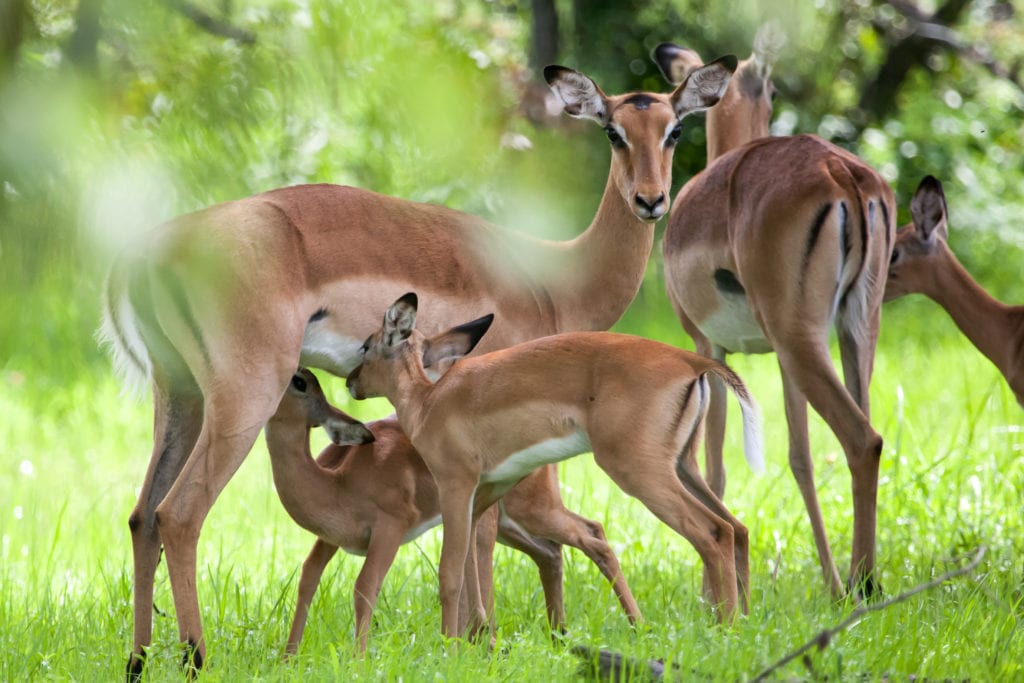
Don’t dismiss the green season if these are the months that work best for you, or with your budget. This is a beautiful time to visit and well-chosen camps can deliver a fantastic safari experience. As well as more affordable rates you can also expect quieter camps – often you may be the only vehicle at a sighting, staying as long as you wish.
Finally – if you are still unconvinced by the low-season safari experience another option is to travel
in mid-season during the months of May/June and November. This is a little more expensive but this does reflect in the easier game viewing. Speak to us to discuss the various options in more detail.
Featured Itineraries
Experience the Okavango Delta
Contact us for more information and to start planning your Okavango safari
Contact